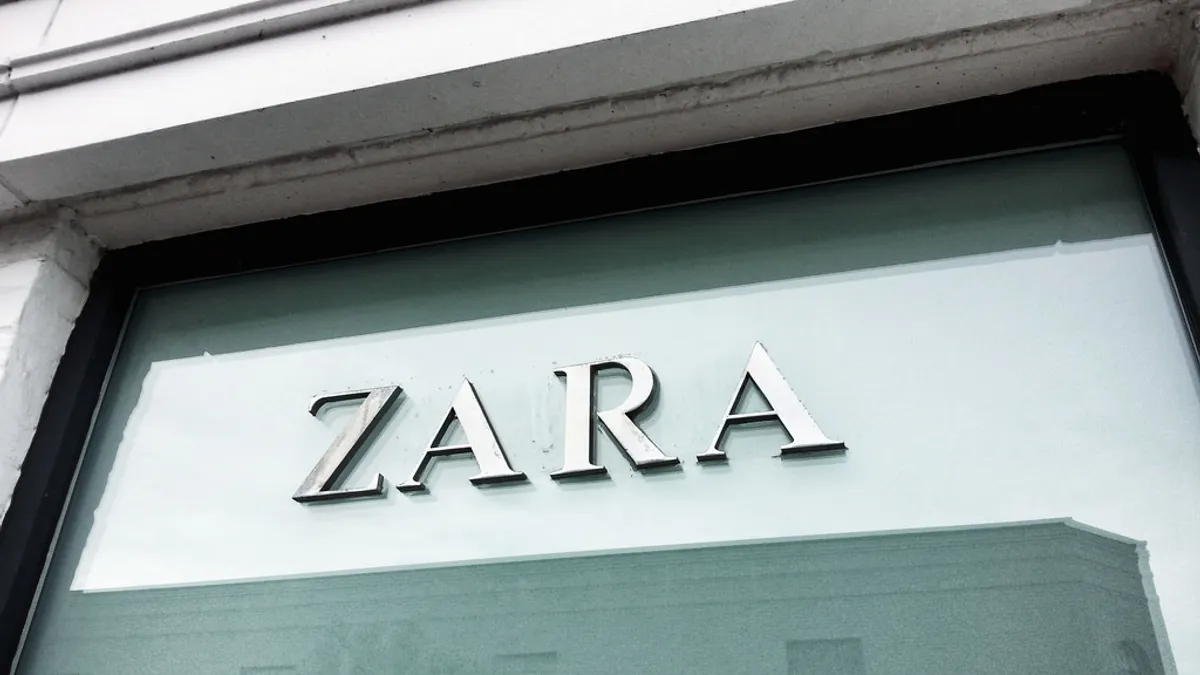Dive Brief:
-
Inditex SA, which owns fast fashion retailer Zara and a host of other brands, said on Wednesday that net profit in the first nine months of its fiscal year rose 9% from the same period last year to €2.2 billion, or about $2.34 billion U.S.
-
Inditex's net sales rose by 11% from Feb. 1 to Oct. 31 to €16.4 billion ($17.5 billion). In constant-currency terms, top line growth was 15%, underpinned by solid same-store sales growth. The company also said that in-store and online sales increased by 16% in constant-currency terms between Nov. 1 and Dec. 12.
-
Inditex has 7,240 stores in 93 markets and an online presence in 41 markets, most recently extending its e-commerce sales platform to Turkey. The company also said that in the third quarter it rolled out mobile payment support to all of its stores in Spain.
Dive Insight:
Zara’s parent revolutionized affordable fashion by creating a lean and speedy supply chain that turned its stores into go-to destinations for shoppers of all budgets. Even wealthier shoppers are known to frequent Zara stores (and those of rival H&M) thanks to the company’s acute awareness and constant supply of emerging designs.
That efficiency has protected Zara from bloated inventories that arise at other retailers for a number of reasons, from the weather to fickle consumer tastes, and goes far in protecting its margins. It's also in part why the company's earnings reports tend to emphasize the growth of its physical footprint, and this year the retailer is developing and renovating buildings in key areas of key cities in tune with their cultures, like local music scenes.
"The company's growth is driving noteworthy job and value creation in our various markets, most particularly in Spain, boosted by the simultaneous growth at the Group's headquarters," Inditex Chairman and CEO Pablo Isla said in a statement Wednesday. "This momentum is the result of sustained investment — logistics facilities and stores — as well as the ongoing development of our integrated offline-online store model."
Other apparel retailers are also speeding up their supply chains, however, including the upscale brands that have provided fodder for Zara to imitate. Often Zara has provided shoppers with designs shown on the runway well before the designers themselves deign to bring them to stores. But that’s changing as the likes of Burberry, Tom Ford, Michael Kors, Thakoon Panichgul, and Rebecca Minkoff have shortened the time between runway and sales, in some cases making new designs available immediately. That could hurt fast fashion’s ability to appeal to all but the most budget-minded consumers.
Indeed, Inditex’s gross margins in the first nine months of the year declined from 58.8% in the same period last year to 57.9%. That’s a concern, according to a note from Credit Suisse.
“In our view the key will be what happens to sales growth in spring/summer if the price reinvestment of the past 18 months starts to slow,” according to a Credit Suisse analyst note cited by The Wall Street Journal.
Still, Inditex posted healthy holiday sales numbers so far, which didn’t go unnoticed by analysts. “Inditex’s sales trends to Dec. 12 are very encouraging,” according to Société Générale analyst Anne Critchlow, who pegs the company’s same-store sales growth at 10%, 3 percentage points better than expectations. “Inditex’s same-store sales growth continues to stand well ahead of its multichannel competitors.”














